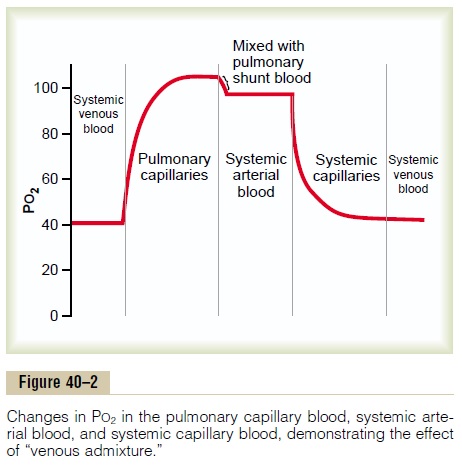Chapter: Medical Physiology: Transport of Oxygen and Carbon Dioxide in Blood and Tissue Fluids
Transport of Oxygen in the Arterial Blood
Transport of Oxygen in the Arterial Blood
About 98 per cent of the blood that enters the left atrium from the lungs has just passed through the alve-olar capillaries and has become oxygenated up to a PO2 of about 104 mm Hg. Another 2 per cent of the blood has passed from the aorta through the bronchial cir-culation, which supplies mainly the deep tissues of the lungs and is not exposed to lung air. This blood flow is called “shunt flow,” meaning that blood is shunted past the gas exchange areas. On leaving the lungs, the PO2 of the shunt blood is about that of normal systemic venous blood, about 40 mm Hg. When this blood combines in the pulmonary veins with the oxygenated blood from the alveolar capillaries, this so-called venous admixture of blood causes the PO2of the bloodentering the left heart and pumped into the aorta to fall to about 95 mm Hg. These changes in blood PO2 at different points in the circulatory system are shown in Figure 40–2.

Related Topics